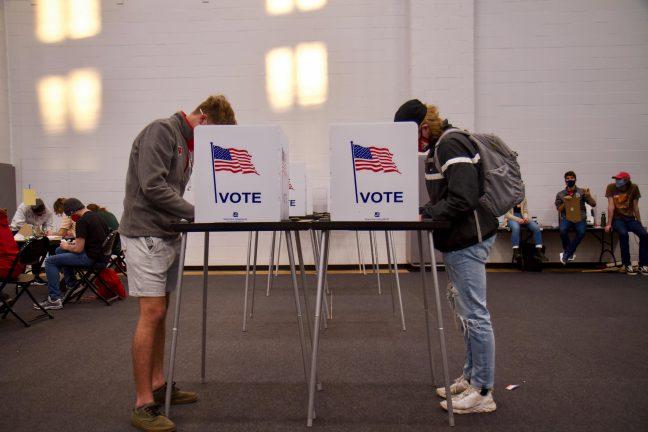New bill calls for ranked-choice voting, represents opportunity to push extremism out of Wisconsin elections
The past decade has seen tremendous polarization across the political spectrum. According to a study from Pew Research, the two political parties are further apart ideologically than at any point in the last 50 years.
One of the forces driving this development is the tradition of party primaries. Party-exclusive primaries require the candidates to appeal to the most extreme segment of the electorate to achieve nomination. This results in candidates who hold more extreme views than the general population.
In Wisconsin, a bipartisan coalition has offered a new electoral system to combat this polarization, according to PBS Wisconsin. The bill would replace the current party primaries with a single primary followed by a general election where voters elect candidates via rank-choice voting. Electoral reforms such as this one are crucial to avoiding partisan gridlock and voter alienation despite the potential difficulties in implementation.
Rather than elections that align with the status quo where voters cast a vote for a single politician, rank-choice voting has the voter rank the candidates from most to least preferred. If a candidate receives a majority of the first-place votes, they win the election. If no one achieves a majority, the candidate that received the fewest votes is eliminated — their votes go to whoever was second on the voters’ ballot. This process would continue until one candidate receives a majority of votes.
Proponents tout numerous benefits of such a reform. The two most crucial and compelling arguments are for depolarization and re-engagement of the electorate.
The two-pronged approach of legislation proposed in Wisconsin is designed to combat polarization. In addition to the elimination of party primaries, the structure of rank-choice voting encourages candidates to reach beyond their base. In a rank-choice election, second-place votes can be just as crucial as first-place votes — candidates must win over “on the fence” voters.
Last presidential election, Biden only won by 20,000 votes in Wisconsin, according to the New York Times. Rank-choice voting would further invigorate elections and force candidates to campaign to the whole electorate. This moderation would, in theory, help combat the partisan gridlock. A new voting system would remove the incentives driving the “race to the bottom” extremism, particularly among House Republicans.
This reform is particularly relevant given the state of national politics. Congress just narrowly avoided a government shutdown precipitated by the most extreme members of the Republican party. These members are a palpable symptom of the polarization of our politics.
Members of the Freedom Caucus, a group of extreme House conservatives, essentially held the government hostage until McCarthy worked with Democrats to pass a short-term spending bill. Then, with support from Democrats, they ousted McCarthy. Their only platform is to be as disruptive and extreme as possible — a result of the partisan primary electoral system.
Though rank-choice voting would not immediately fix the entrenched issue of extremism, it would set the country on the path to moderation and good-faith governance.
In addition to addressing polarization, rank-choice voting would help address political disengagement. A frustrating phenomenon within politics is the feeling that one must vote for a politician or risk becoming complicit in voting for a candidate of the other party. Voting becomes selecting the lesser of two evils.
Imagine an election where three people are running — one centrist candidate and one person on each end of the political spectrum. In a rank-choice system, voters wouldn’t have to worry that their vote for a liberal or conservative candidate would be canceled out by someone else’s vote for the other, more extreme candidate, because they could rank the centrist as their second option. Thus, people would feel that their views are better represented.
Moderate voters — a group that participates less than people on the edges of the ideological spectrum — will be encouraged to become more politically active if candidates benefit from soliciting their vote.
Ultimately, the implementation of rank-choice voting and the subsequent benefits rely on overcoming significant barriers.
First, achieving such dramatic electoral change requires effective communication. The electorate has to be educated on the structure and benefits of rank-choice voting so there is support, trust and understanding. In the era of election denial, public trust in our electoral institution cannot be taken for granted.
The other significant barrier is that the state legislature does not reflect the ideological makeup of the state. Reforms are supported by members of both parties, according to PBS Wisconsin. But gerrymandered maps ensure that the legislature is skewed to favor Republicans. Therefore, ranked-choice legislation is unlikely to pass in the current legislature.
Thus, we must continue dedicated efforts to educate and combat gerrymandering to reform the electoral system in a way that will reinvigorate and depolarize our politics.
Thompson Blade (tblade@wisc.edu) is a sophomore studying economics and data science.


